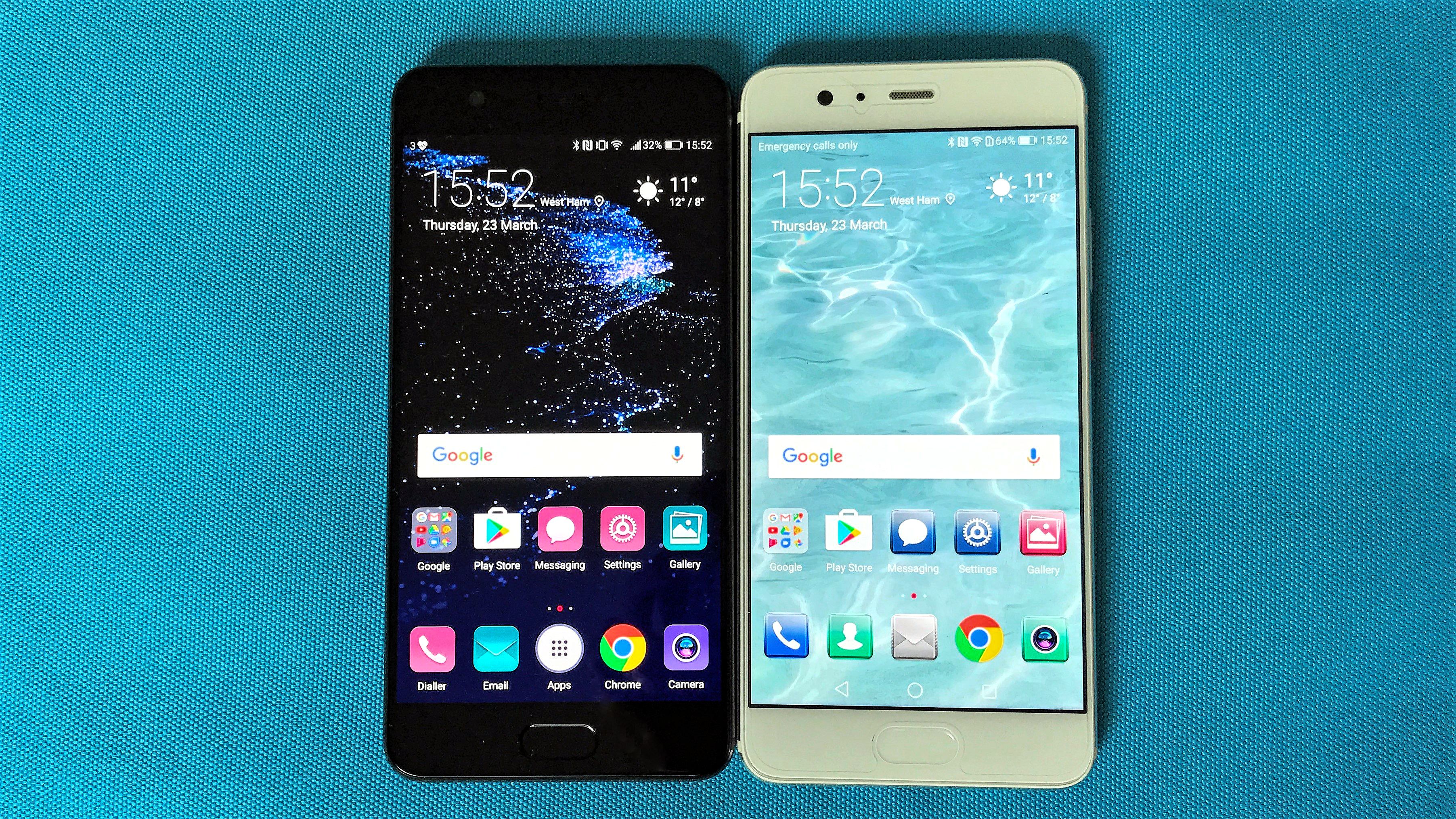Why you can trust TechRadar
Interface and reliability
- EMUI 5.1, based on Android Nougat, isn’t the best but it’s improved
- Navigation/soft key combo is confusing and badly designed
The launch of the P10 Plus and the new EMUI version that comes with it marks a watershed moment in Huawei’s history: they finally, finally listened and brought back the app drawer.
Huawei reviews have lamented the fact that EMUI steals your app drawer and doesn’t even offer an option to put it back, forcing you to use iPhone-style home screens with everything on display.
In EMUI 5.1, you still have that setting on by default, but if you’re determined (or the sort of person who would have resorted to using the Google Now launcher otherwise), you can change it to get your lovely menu of app icons back.
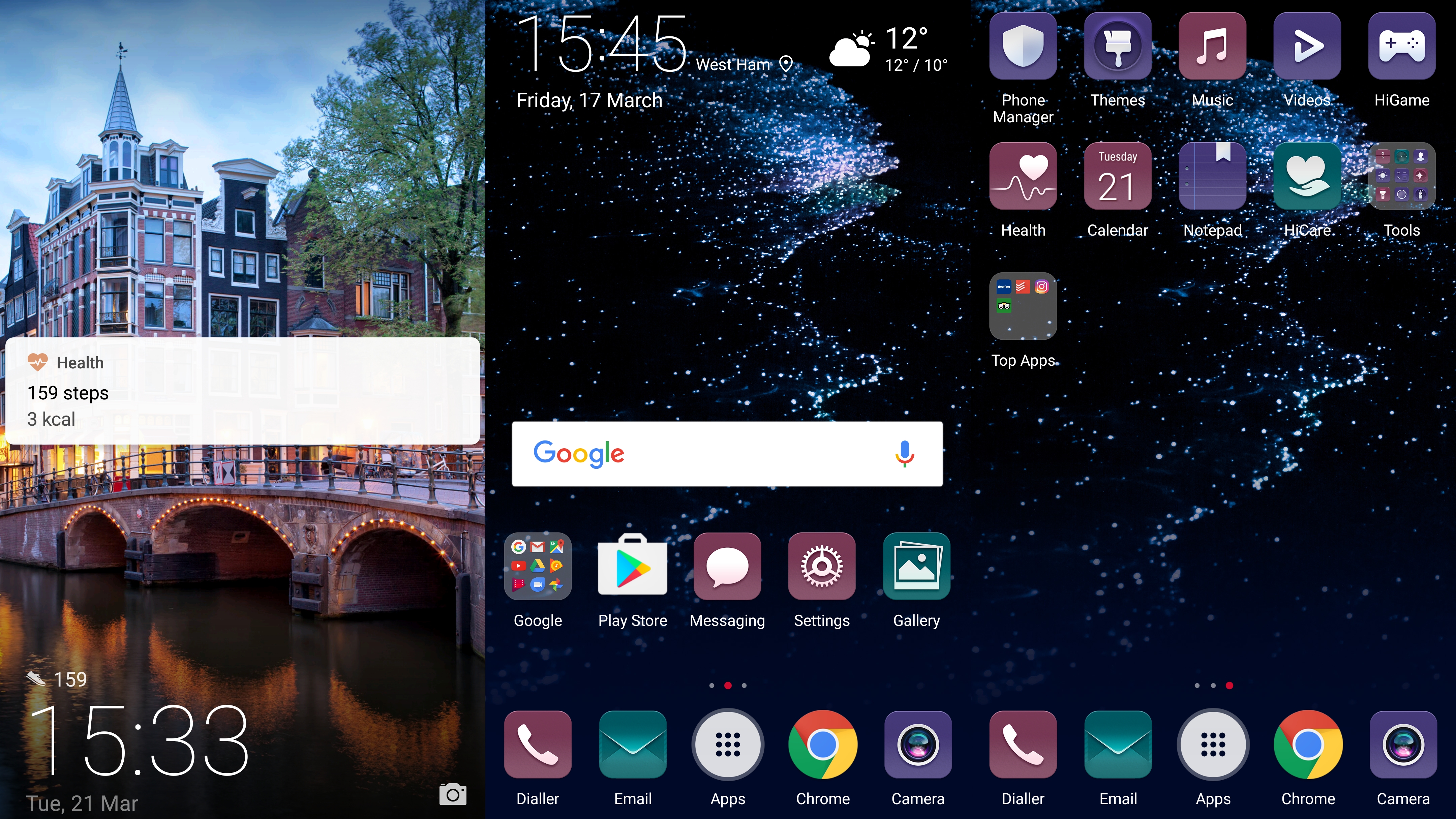
Go to Settings > Home Screen Style and pick ‘Drawer.’ You still have the slightly ugly Huawei themes to contend with, including their matching icons for default apps like Clock and Messaging, but there are many (MANY) free themes to choose from, so chances are you can find one you like.
Sadly, at the time of writing there isn’t one called “Stock Android,” which is what we’d have picked.
Another thing that’s significantly different from other Huawei phones is the new ‘navigation key.’ It’s on the front of the phone and contains the fingerprint sensor (which is usually on the back of Huawei and Honor handsets).
This one’s a horizontal oval like everyone seems to be doing right now, but it doesn’t press in – similar to the ones on the OnePlus 3T or the HTC 10.
When you first get the phone, you naturally assume this button is your home key. It’s not. Once you’ve set up your fingerprint, it does unlock the phone – and very quickly too – but try pressing on it to go to your home screen and nothing will happen, because Huawei has gone for the worst of both worlds and whacked the Android software nav buttons on there as well.
Normally you do one or the other. This is somehow worse than both.
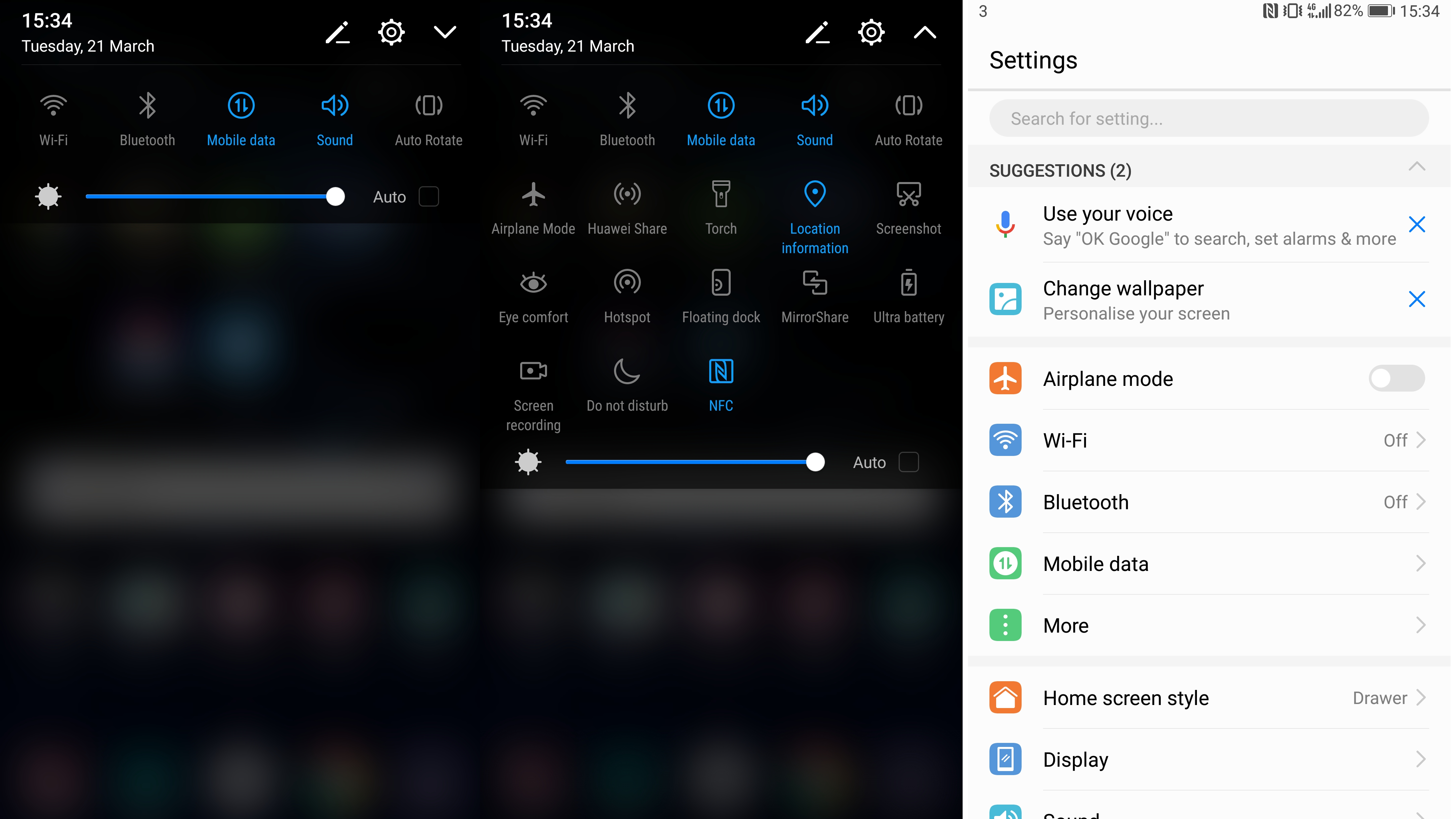
In short, you’ve got two options. You can either use the hardware button just as a fingerprint sensor and have the software nav keys for everything else, including the home key.
Or you can go into the menu settings and switch to just the hardware button, which we relievedly thought would fix the issue of not being able to press to go Home. But that would be too easy.
Instead of using either the Android or the iPhone method, Huawei has gone its own way and come up with a third: you have to tap the pad once to go back (which quite clearly should have been home), long press to go home (which should have been recent apps), and swipe left or right on the pad itself to see recent apps (surely a left swipe should be back?).
The swipe is also irritatingly hard to master.
After several days of this nonsense, you do get used to it, but it’s incredibly counter-intuitive and stands in the way of not only iPhone users getting used to this device, but Android users as well. This was a huge SNAFU and we hope it gets fixed in a software update.
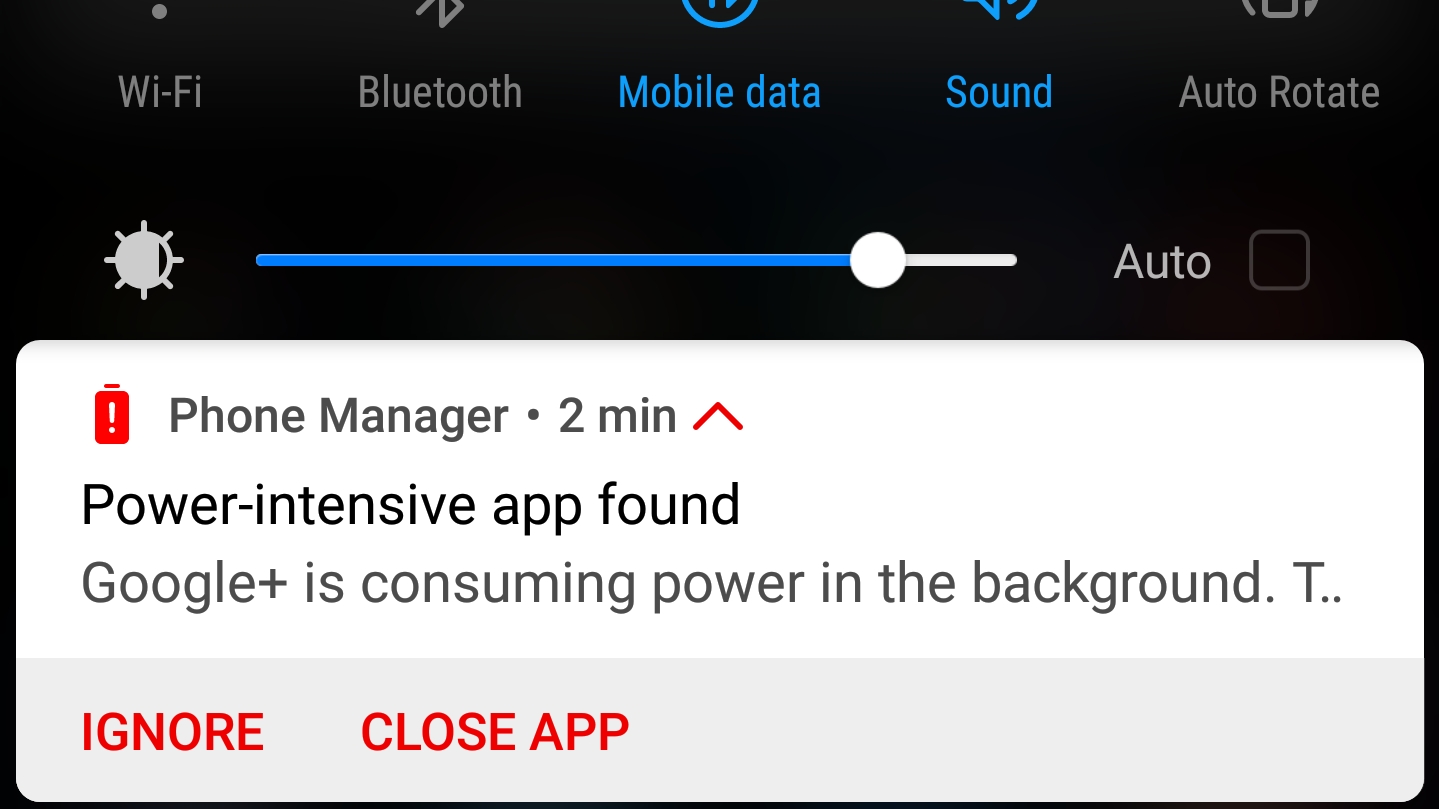
EMUI 5.1 is based on Android Nougat, which is good. But it’s been tweaked too far, in our opinion.
There’s lots of Huawei stuff, like HiVoice, their version of Siri. The notification shade has also been redesigned and the labels rewritten in ways that are, at best, no different, and at worse actually less intuitive than stock Android.
And those infernal “App is using too much power” push notifications are still there, so you get to turn them all off after they’ve annoyed you for the fiftieth time.
Movies, music and gaming
- Average sound quality
- Gets warm during gaming
Considering the price of the P10 Plus, we’d have hoped for better audio. The handset has one speaker, on the right of the bottom edge, and while the sound is perfectly fine, it’s not what we’d expect from a top-end phone. Pushing it to max volume results in considerable noise, and at moderate volume the quality is average – and of course, very directional due to the speaker placement.
There is at least a 3.5mm headphone jack, so Huawei hasn’t fallen into the trap of emulating Apple there. The bundled headphones are standard fare: white, cheap-looking, plasticky. They sound fine, but leak music quite badly.
Again, we’d have expected better for the price, especially when competitors like HTC include high-end earphones with their flagships.
Videos look superb on that sizeable QHD screen. Brightness goes exceptionally high (to the point that it hurts slightly) and colors, while bright, aren’t unrealistic. There’s a little screen darkening at extreme angles, but the most frustrating thing is the patina of greasy fingerprints if you remove the screen protector – and, at times, even if you don’t.

Nonetheless, this is undoubtedly an excellent phone for watching HD movies, but that’s not a standout feature in the current flagship market.
Intensive gaming, and in fact any intensive process, will cause the phone to run hot at the back, sometimes very hot, particularly in the top half. Running Asphalt 8 turned the P10 Plus into quite a pleasant hand warmer on an excessively windy day, but that’s probably not a good thing.
Graphics and performance-wise, it’s more than capable, handling demanding games without any lag. We’re also slightly disappointed to report that the GPS is very accurate, so you won’t be able to hatch your eggs in Pokémon Go by sitting on the sofa like you can with some handsets. That game does decimate the battery at a particularly alarming rate, but there’s nothing new there.
Performance and benchmarks
- 6 lovely gigs of RAM
- Slightly outmoded chipset
The P10 Plus is packing the Huawei-made Kirin 960 CPU, an octa-core SoC consisting of four 2.4GHz cores and four at 1.8GHz. It’s not the newest or flashiest chipset, and Huawei fans will be a little disappointed to see it trotted out again after its appearance on the Mate 9.
However, the bright side is that very generous 6GB of RAM – though OnePlus has taken the shine off somewhat by releasing the excellent OnePlus 3T with the same amount at a much lower price. Huawei says the P10 Plus learns from your usage so it can delegate RAM to where it’s most needed, but we couldn’t see a difference from other Androids.
The P10 Plus has a tendency to get very warm during intensive activity, but we’ve noticed this on other Huawei handsets, like the Honor 8, and it tended to dissipate after the first few weeks (with the exception of long periods of gaming).
However, if you’re thinking of water-cooling it, don’t: there’s no water or dustproofing on this phone, unlike competitors like the Samsung Galaxy S7 Edge.
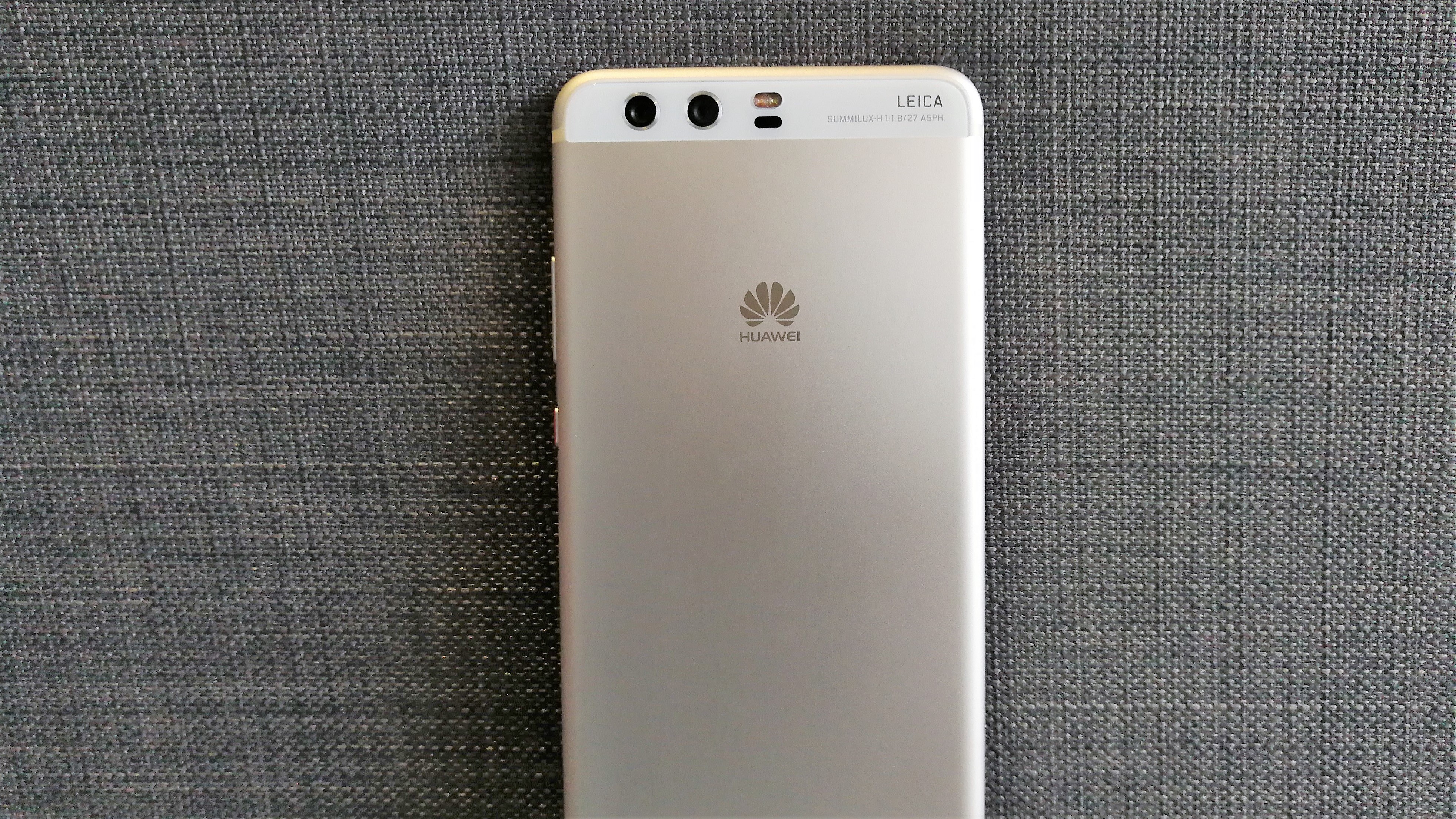
Our benchmarking puts the P10 Plus firmly in the Android big leagues. An average of three Geekbench 4 multi-core CPU tests came out at 5,090, which at current rankings would place the P10 Plus fourth overall, between the Samsung Galaxy Note 7 and the Huawei P9, and below the Samsung Galaxy S7 and S7 Edge.
Meanwhile, AnTuTu’s graphics, rendering and performance tests gave a total result of 119,164, placing the phone down at number 24. However, that’s not as bad as it sounds: the two Galaxy S7s are at 17 and 18, while many of the phones in the top 20 are relatively obscure Asian handsets.
The top 3 currently consists of the iPhone 7 Plus, iPhone 7, and OnePlus 3T – though the latter has previously been accused of cheating.
All things considered, you’ll get strong and durable performance from the Huawei P10 Plus, but it’s not going to blow any of the existing Android kings out of the water.
Current page: What's it like to use?
Prev Page Introduction, key features and design Next Page Battery life and camera